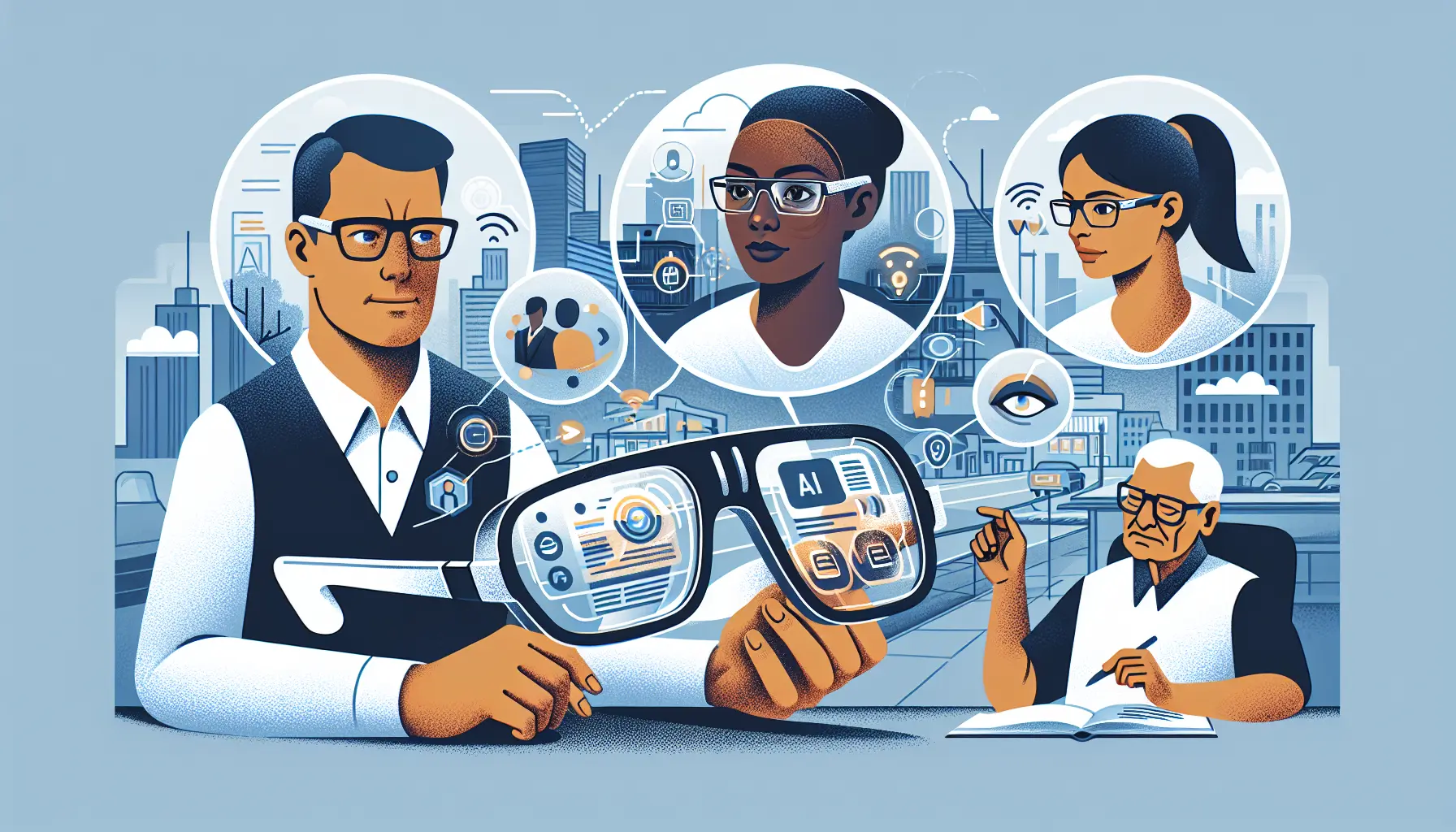
AI Glasses for the Visually Impaired: Assistive Tech Explained
Category: Smart Glasses Use Cases
Generated: 2025-04-06
Introduction
Welcome to the fascinating world of AI glasses, a technology that's not just reshaping the eyewear industry but profoundly enhancing the lives of the visually impaired. In an era where technology bridges gaps and opens new avenues of accessibility, assistive tech like AI glasses plays a pivotal role. This article delves into how these smart devices are transforming everyday experiences for those with visual impairments.
Understanding AI Glasses Technology
AI glasses are more than just eyewear; they are a blend of cutting-edge technology and practical design. Unlike traditional eyeglasses that simply correct vision, AI glasses incorporate:
- Cameras that capture the surrounding environment.
- Sensors that detect movement and proximity.
- Audio feedback systems that provide real-time information.
- Connectivity features for integration with smartphones and other devices.
These components work in harmony to offer a seamless and intuitive user experience.
How AI Glasses Assist the Visually Impaired
AI glasses are equipped with features that can significantly aid visually impaired users:
- Real-time Object Recognition and Description: By identifying and describing objects in the environment, AI glasses can help users navigate complex spaces.
- Navigation Assistance and Wayfinding: Built-in GPS and mapping capabilities guide users through unfamiliar areas safely.
- Text Reading Capabilities and Voice Commands: These glasses can read text aloud, from signs to digital screens, and respond to voice commands for hands-free operation.
- Integration with Smartphones and Other Smart Devices: This allows users to receive notifications, control smart home devices, and stay connected with ease.
Key Benefits of AI Glasses
The advantages of AI glasses extend beyond mere convenience:
- Enhanced Independence and Confidence: Users can move about with greater autonomy, reducing reliance on others.
- Improved Quality of Life and Accessibility: By making everyday tasks more manageable, these devices improve overall life satisfaction.
- Increased Safety in Unfamiliar Environments: With real-time data and alerts, users can navigate safely and confidently.
- Personalized User Experience through AI Learning: Over time, AI glasses learn user preferences, offering a tailored experience.
Popular AI Glasses Models and Brands
The market for AI glasses is growing, with several notable models and brands leading the charge:
- Brand A: Known for its sleek design and robust feature set, including advanced navigation tools.
- Brand B: Offers competitive pricing with an emphasis on text reading capabilities.
- Brand C: Highlights include exceptional battery life and seamless smartphone integration.
Prices can vary, generally ranging from $500 to $2,000, depending on features and brand reputation.
Challenges and Considerations
Despite their promise, AI glasses come with challenges:
- Limitations of Current Technology: While continuously improving, AI glasses may struggle in low-light conditions or with complex object recognition.
- Privacy Concerns: The data collected by these devices raise questions about security and consent.
- Cost and Accessibility: High prices can make them inaccessible to some users, particularly in developing regions.
- User Adaptation and Learning Curve: Adjusting to using AI glasses effectively can take time and effort.
The Future of AI Glasses for the Visually Impaired
Looking ahead, the future of AI glasses is bright:
- Emerging Trends and Technological Advancements: Innovations in AI and machine learning promise even more intuitive features.
- The Role of AI: As AI grows more sophisticated, its ability to predict user needs and preferences will enhance the utility of these devices.
- Potential for Wider Adoption: As costs decrease and technology improves, AI glasses are likely to become a staple in assistive tech.
Conclusion
AI glasses are a beacon of hope and independence for the visually impaired, offering a glimpse into a future where technology and human needs are perfectly aligned. As we continue to innovate and support assistive technology, the possibilities are endless. Stay informed and engaged with the latest advancements to help champion these transformative tools.
Additional Resources
- National Federation of the Blind
- American Foundation for the Blind
- Further Reading on AI and Assistive Technology
- Contact Brand A Customer Support: support@brandA.com
We'd love to hear your thoughts! Leave a comment below or connect with us on social media to continue the conversation about the future of AI and assistive technology.